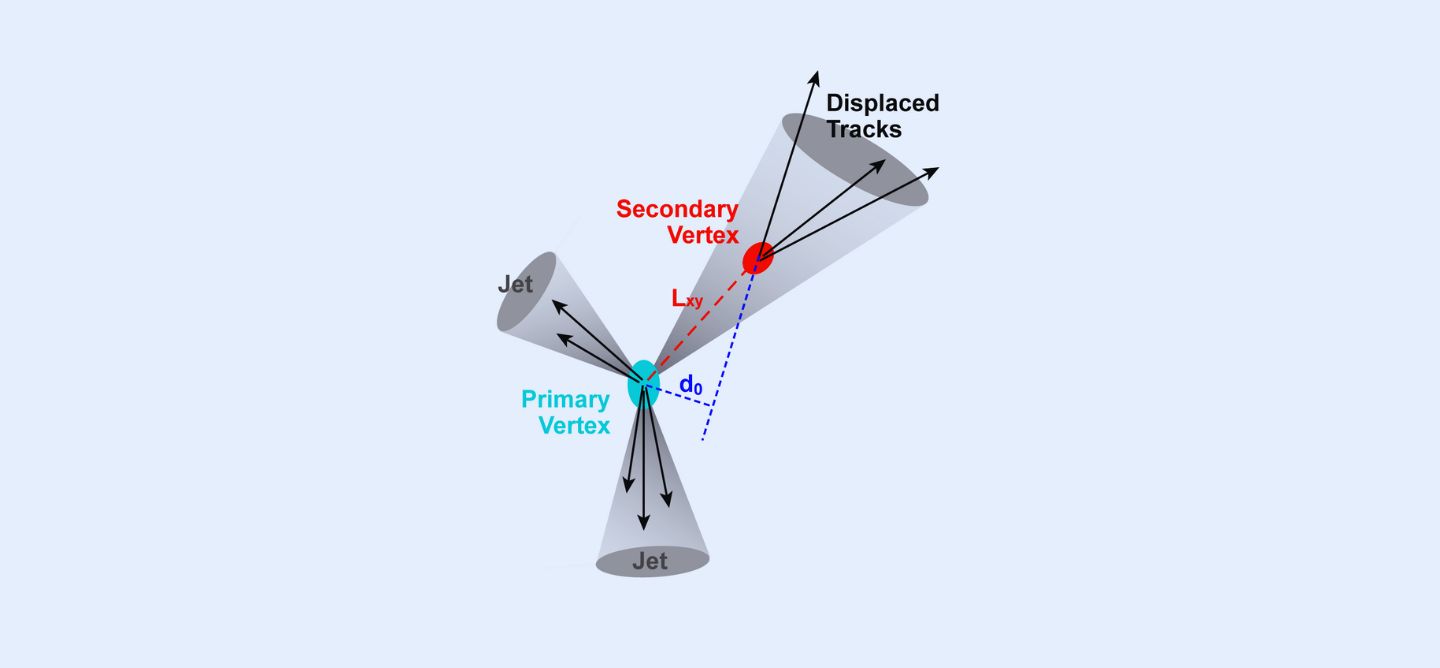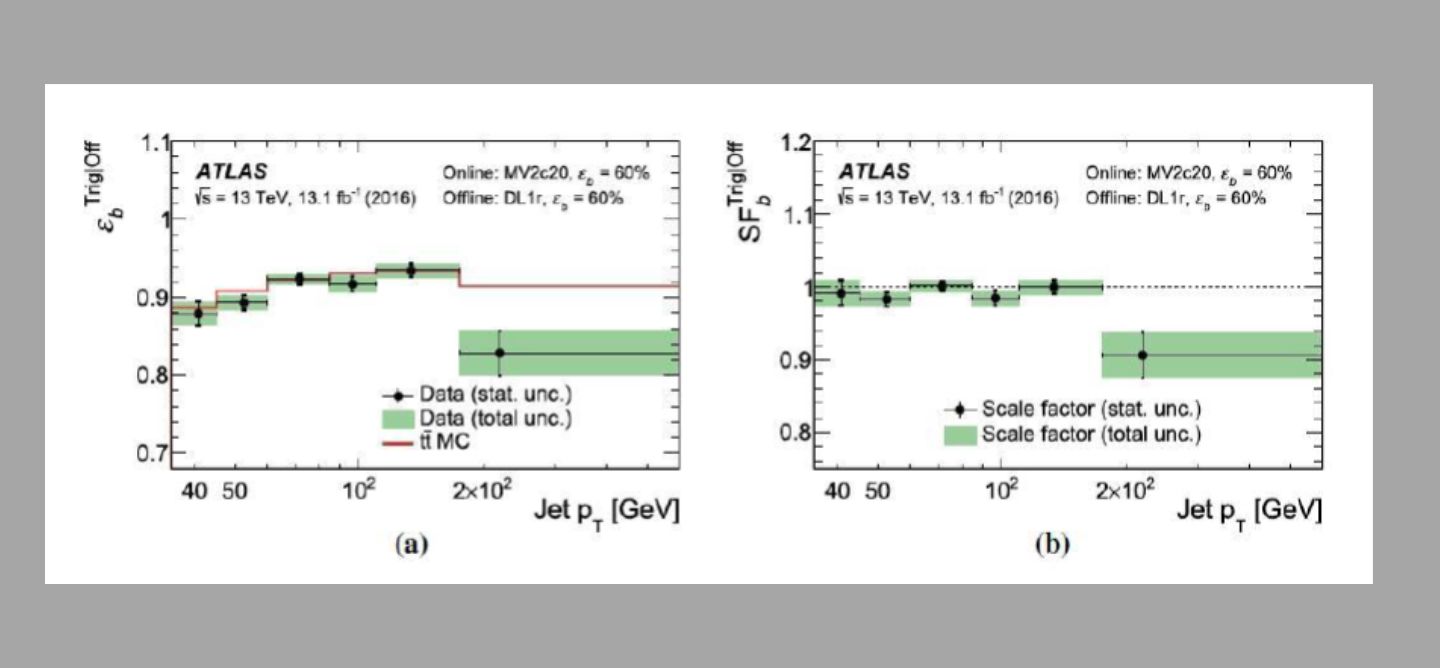Trigger Studies
The identification of jets containing b-hadrons is widely used in ATLAS, both in searches for new physics, and in measurements of the SM processes, including measuring properties of the Higgs boson. The ability to select events containing b-jets at the trigger level is crucial to be able to search for or study processes containing b-jets, especially for those that do not provide any other distinguishing characteristics that are easier to identify, such as high pT light leptons, or missing transverse momentum. In particular, for processes such as HH → bbbb, all hadronic ttH(H→bb) and bA(A→ bb), efficient b-jet triggers are critical for the success of the analyses.
I studied the performance of the b-jet trigger in Run2 data. I measured the b-jet trigger efficiencies and computed corresponding scale factors to be applied as corrections to the simulated data, using a high b-jet purity, di-lepton top-pair events in the Run2 data. One of the figures above shows the efficiency of the b-jet trigger as a function of jet pT for a given b-tagging operating point (left) and the right figure shows the corresponding scale factors to be applied to simulated data as corrections. Total uncertainties on the measured efficiencies are due to data statistics and systematic uncertainties to account for non b-jet contamination, namely purity of b-jets and efficiency of the b-jet trigger for non-b-jets.
I also served as the co-coordinator of the b-jet trigger group on ATLAS between 2020 and 2021, where I was responsible for studying all aspects of the b-jet trigger. Together with co-coordinator Prof. Steven Sekula (formerly SMU), I designed 5 different authorship qualification tasks, recruited new members to ATLAS, and provided guidance to complete their qualification tasks.
The Shrestha Lab at WAC continues to study the b-jet trigger calibration.

